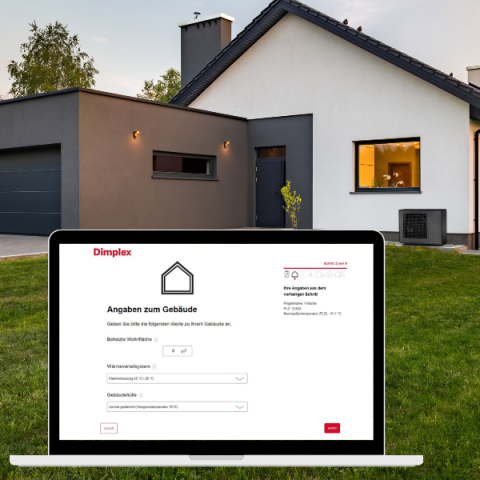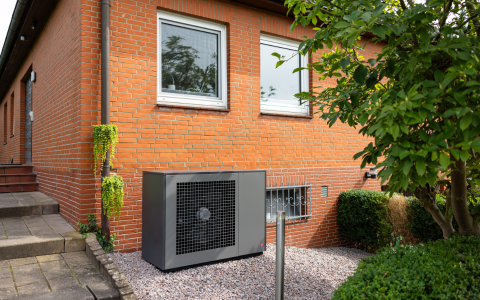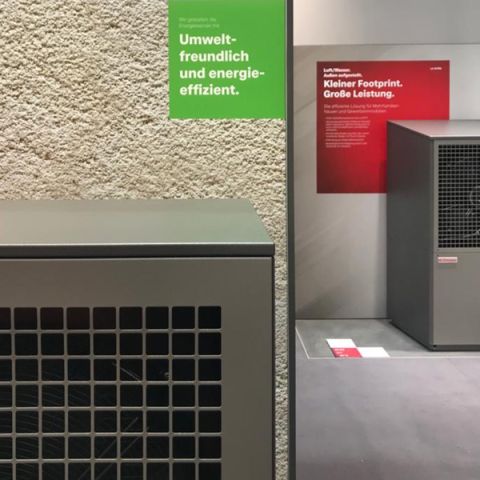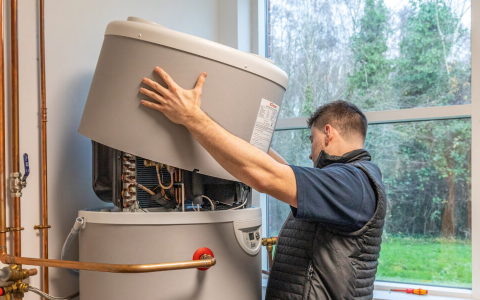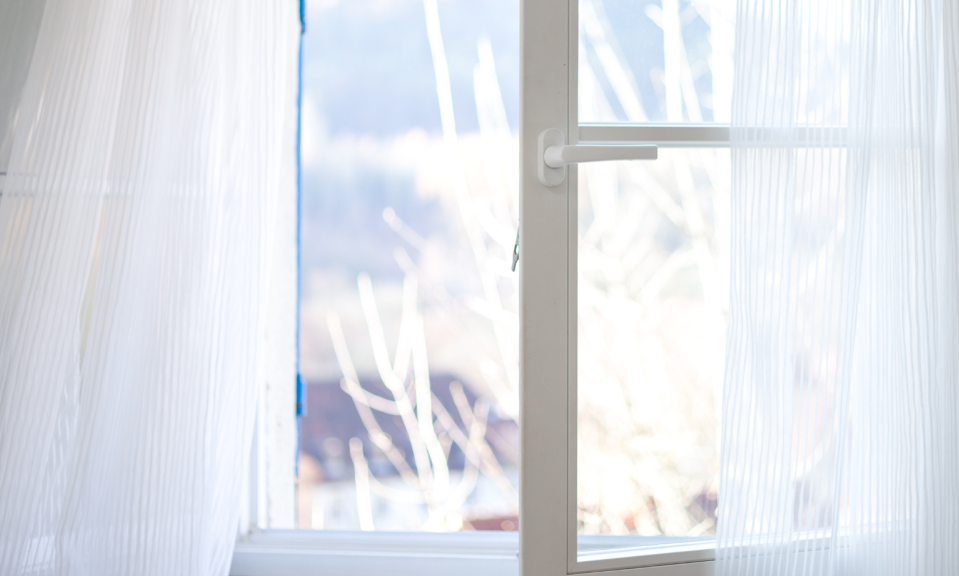
Advantages of controlled domestic ventilation
Why ventilation is important
Turn the handle, open the window and let the air flow in to get a fresh head. Everyone performs this everyday action with such great effect at least once a day. But why is regular ventilation actually so important?
Ventilation preserves the building fabric by removing excess moisture and preventing mould.
A largely airtight building envelope prevents uncontrolled air exchange through gaps and cracks and reduces energy consumption. However, there is insufficient natural air exchange. The minimum air exchange required in terms of building physics and hygiene is often no longer achieved, the air quality drops and the concentration of moisture, CO2 and pollutants increases. There is a risk of damage to the building and health. Window ventilation is not sufficient here and energy is wasted.
Too little ventilation
- Moisture damage
- Mould fungi
- Poor air quality
Ventilate too much
- Ventilation heat losses
- cooled rooms
- High energy consumption
Average water vapour emission in a household
- Water vapour emission per person 30 to 100 g/h. (for example through showering, washing, drying laundry, cooking, plants, etc.)
- Release of 6 - 14 kg (6-14 litres) of water per day in a three-person household
Required air exchange rates?
To remove 10 kg (10 litres) of water from indoor spaces, approx. 3,000 kg of air must be moved. This corresponds to an air exchange rate of approx. 2,400 m³/day or 100 m³/h. To achieve this, the air content of the interior rooms must be exchanged on average around 7 times a day.
Why and how should ventilation be provided?
A home must be sufficiently ventilated in order to remove the existing humidity to the outside. The correct ventilation and the duration of natural ventilation depend on the temperature difference between the indoor and outdoor air, the wind conditions, the type of windows and the location of the rooms.
A home must be sufficiently ventilated in order to remove the existing humidity to the outside. The correct ventilation and the duration of natural ventilation depends on the temperature difference between the indoor and outdoor air, the wind conditions, the type of windows and the position of the rooms.
Ventilation duration
The period in which the entire air volume is exchanged for fresh outside air depends on the position of the windows in the case of window ventilation. Air exchange means the exchange of air in one hour. A single air exchange describes the exchange of the entire volume of air in the home.
Shock ventilation means opening a window completely. Cross-ventilation is the most effective type of ventilation, with which the room air is completely exchanged in the shortest possible time. This involves opening opposite windows at the same time, even windows in different rooms.
Duration of air exchange for a simple air change
| Window position | Ventilation duration for simple air exchange |
|---|---|
| Windows and doors closed | ~ 3 to 10 hours |
| Window tilted (tilt ventilation) | ~ 15 to 90 minutes |
| Window half open | ~ 6 to 12 minutes |
| Windows fully open (shock ventilation) | ~ 4 to 8 minutes |
| Opposite windows fully open with draught (cross ventilation) | ~ 2 to 4 minutes |
Ventilation duration according to season
The required air change also depends on the humidity content of the outside air. In winter, the outside air is very dry in cold temperatures and less ventilation is required. In milder temperatures in spring or autumn, the absolute humidity of the outside air is higher and more ventilation is required.
The recommendations for the duration of shock ventilation therefore vary throughout the year.
Ventilation duration over the course of the year
| January, February, December | 4 to 6 minutes |
| March, November | 8 to 10 minutes |
| April, October | 12 to 15 minutes |
| May, September | 16 to 20 minutes |
| June, July, August | 25 to 30 minutes |
Advantages of controlled domestic ventilation
Protection of the building structure
- against mould growth
- and moisture damage
Optimisation of building efficiency
- by minimising ventilation heat losses
Increasing energy efficiency
- Reduction of ventilation heat losses
- Positive assessment according to EnEV / EEWärmeG crediting
Increasing living comfort
Increasing comfort
- Air exchange independent of weather influences
- Fresh air increases well-being
- Ventilation with closed windows as burglary protection
- Protection from outside noise
Improvement of air hygiene and quality
- Low concentration of pollutants and removal of harmful emissions
- Low dust and pollen load
- Removal of odours
High moisture production in living areas
A high level of moisture is produced in living areas such as the bathroom or kitchen. In such cases, the moisture should be removed as soon as possible and the windows opened fully. The door should remain closed if possible so that the moist air is not distributed throughout the home. After shock ventilation, the room air must first be warmed back up to room temperature. Depending on the climatic conditions, it may be necessary to repeat the shock ventilation several times. With a ventilation system, this time-consuming ventilation can be omitted.
